These light wheat olive oil loaves include three of my favorite things – olive oil, rosemary, and a preferment. The preferment enhances the flavor and texture of the loaves. The dough also includes some home-milled wholegrain flour which lends a lovely color and rustic appeal.
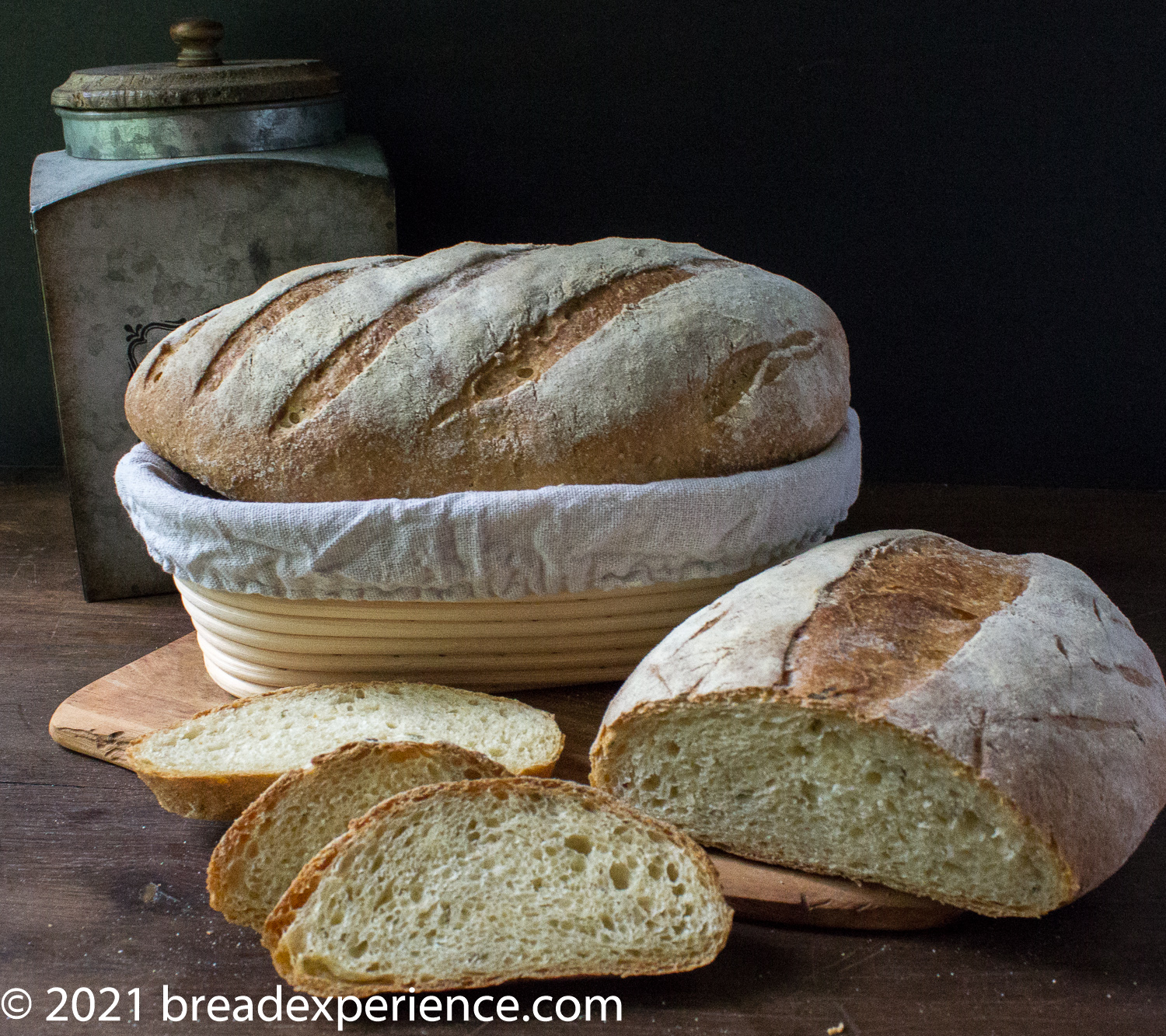
Light KAMUT Olive Oil Rosemary Loaves
I’ve been on an olive oil kick ever since I made this rustic olive oil wreath with the Bread Baking Babes this past March. I liked that dough so much, I decided to use the same dough to make other types of loaves.
The dough is prefermented with an overnight biga, that is spiked with a bit of instant yeast. This method of prefermenting the dough has always appealed to me. For one thing, it’s convenient. Most of the work happens while you’re sleeping, or doing other things, but more importantly, it boosts the flavor.
When I made the olive oil wreath dough, I noted that it rose fairly quickly. So, for my next experiments, I decided to reduce the amount of yeast and extend the proofing time a bit. If you want the dough to proof more quickly, you can use more yeast, but I chose to let this dough rest a little longer.
Olive Oil Baguettes
Using the same dough as the olive oil wreath, I made baguette-style loaves to test an oblong basket. I used the full amount of olive oil. Although these loaves wouldn’t be considered baguettes in the traditional sense because they contain olive oil, I like the addition of the oil, because it adds to the flavor. The dough and the basket worked well for the long loaves. I forgot to get a crumb shot of the baguette-style loaves, but they tasted great.
Olive Oil Batards
The next few times I made this bread, I used different types of home-milled whole grain flour and varied the amount of dried yeast in the biga and the final dough. Because I was making this bread so often, I decided to reduce the amount of olive oil used. 50 grams is a lot of olive oil so I changed it to 30 grams. Mind you, the 50 grams of olive oil makes a delightful loaf, but if you’re like me, and want to make your ingredients last longer, this loaf with the 30 grams of olive oil works very nicely and results in a softer dough.
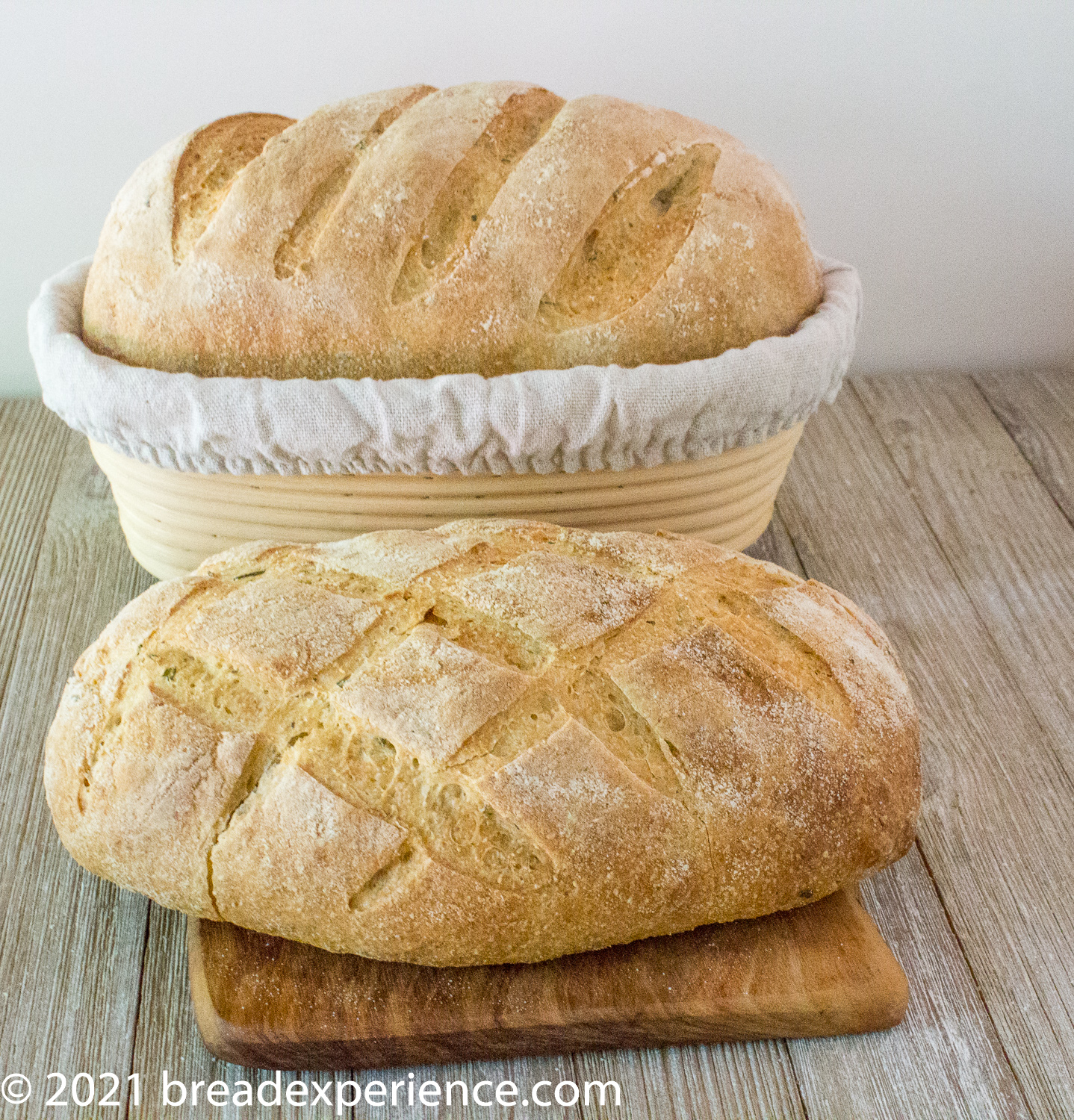
Light White Wheat Olive Oil Loaves
When I began these experiments, my goal was to ultimately introduce a greater proportion of whole grain in the bread. I got to almost 50% whole grain, but the dough proofed so quickly, even after reducing the yeast, that I didn’t quite get the results I was looking for. Although the loaves rose nicely during the bulk ferment and final proof, they flattened a bit during baking due to being over-proofed. They tasted great, but they didn’t perform like I wanted them to.
I think a greater proportion of whole grain would work if you reduce the yeast and shorten the proof time. Perhaps I’ll try that test sometime, but for now, I decided to take a different approach. I’m going to convert this dough to sourdough, and then start increasing the whole grains until I reach my goal of at least 70% wholegrain flour.
This yeasted olive oil bread is a great bread to make for dinner because it doesn’t take very long. However, if you want to develop even more flavor, and are willing the spend a little more time, then stay tuned for the next post where I convert this bread to sourdough.
Print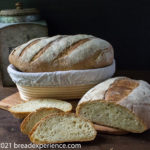
Light Wheat Olive Oil Rosemary Loaves with Biga
- Yield: 2 medium loaves or 1 large loaf 1x
Description
These light wheat olive oil loaves are infused with a hint of rosemary and utilize an overnight biga to preferment and enhance the dough.
Ingredients
Biga (makes enough for 2 batches)
- 125 grams (3/4 cup plus 2 1/2 Tbsp.) all-purpose flour
- 1/8 tsp. instant yeast
- 83 grams (1/4 cup plus 1 1/2 Tbsp.) water
Final Dough
- 100 grams biga (1/2 of above)
- 285– 310 grams water (or more, depending on coarseness of whole grain used)
- 30 grams extra virgin olive oil
- 3/4 tsp instant yeast (use 1 tsp. if shorter proof is desired)
- 400 grams all-purpose flour
- 100 grams whole grain flour (white winter wheat, KAMUT, spelt, etc.)
- 14 grams fine sea salt + 10-25 grams water
- 1–2 Tbsp. (more if desired) finely chopped fresh rosemary, optional
Instructions
Biga:
- In a medium bowl, whisk together the flour and yeast. Pour in the water and mix with a dough whisk or wooden spoon just until the biga ingredients are combined. The dough will be sticky.
- Shape into a ball, cover, and let rest for 6-8 hours in warm room temperature. If the ambient temperature in your kitchen is cooler, you may need to let it rest longer, 10-16 hours.
Final Dough:
- Pour 250 grams of water and the olive oil in the bowl with the biga. Let rest while you are prepping the other ingredients. Mix to dissolve biga.
- In a large bowl, whisk together the flours, yeast, and rosemary, if using. Add the water/biga mixture to the dry ingredients and mix thoroughly. Let rest 20-30 minutes.
- Sprinkle the salt over the dough and dissolve with 10-25 grams of water. If the dough begins to tear, add more water as needed while incorporating the salt into the dough.
- Cover and let rest in a warm place for 1-2 hours, until very puffy, more than doubled. Stretch and fold the dough after 30 minutes and again after 1 hour for a total of 2 stretch and folds. Let rest for remaining 30 minutes to 1 hour.
- Turn the dough back out onto a floured work surface and deflate the dough. Divide into 2 equal pieces for medium loaves. Total weight of dough should be between 960-1000 grams, depending on flour used and how much water you incorporate.
- Gather up the edges and preshape the dough into a ball. Flip the ball and place it seam side down on the work surface. Push the dough against the work surface in a circular motion to tighten the top. Pull the dough toward you to elongate the dough into an oval (batard shape). Place in rice flour-dusted and lined oval banneton baskets. Let proof for 30-45 minutes while the oven is preheating.
- Preheat the oven to 450 degrees F. with a baking stone on the middle rack and a steam pan on the lowest shelf. I use a small cast iron skillet as my steam pan.
- Gently flip the proofed loaves onto parchment paper. Brush off the excess rice flour, if desired, and dust with all-purpose flour to achieve a nice contrast when baked. Score the loaves, then slide the parchment with the loaves onto the preheated baking stone. Immediately add a cup of ice cubes to the preheated steam pan and shut the oven door.
- Bake for 30-35 minutes. Check after 15-20 minutes and rotate the loaves for even baking. Then continue baking until nicely browned. The loaves should sound hollow when thumped on the bottom.
- Transfer loaves to a cooling rack and cool before serving.
Notes
This recipe makes enough biga for two batches. Leftover biga can be refrigerated for up to 3 days to make more loaves.
I made these loaves during the summer in my hot kitchen. If your kitchen is cooler, you can increase the proof time and/or increase the amount of instant yeast used, up to ½ tsp, in the biga and 1 tsp. in the final dough.
- Category: Olive Oil Herb Bread
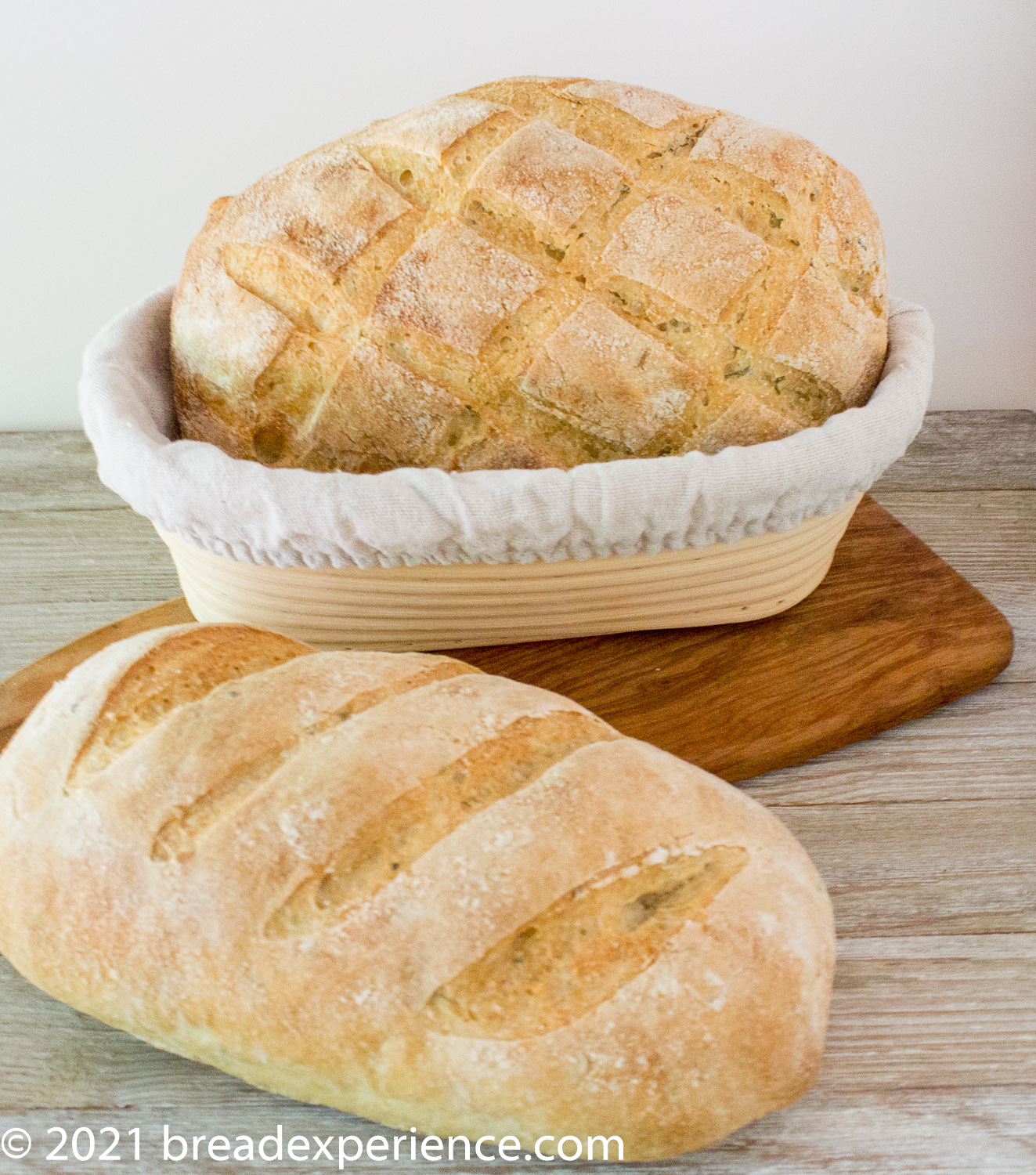
Happy Baking!
Cathy
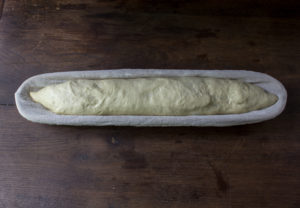
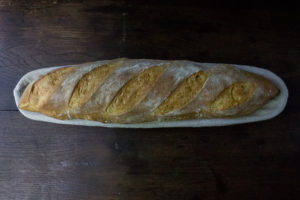
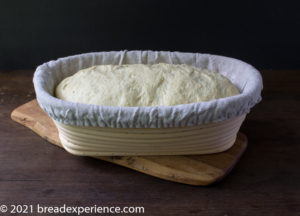
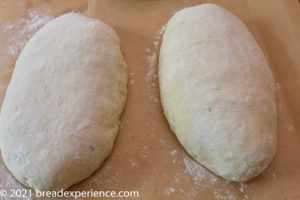
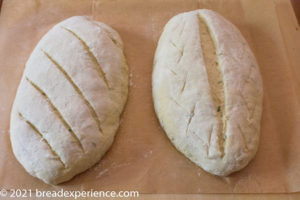
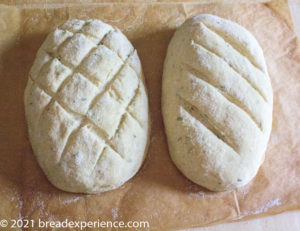
Leave a Reply